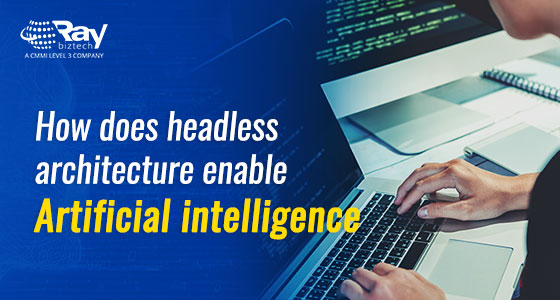How does Headless Architecture Enable AI?

Headless
This has been an onrushing tide for more than three years, and it shows no indications of slowing down. This trend started with a couple of the first entrants in the DX space: SendGrid for email, commerce tools for commerce, and Sitecore for content management systems (CMS). In every area now, there are dozens of "headless" solutions. Some headless branding is well-deserved, while others are a touch more dubious. Headless offers to empower developers and product managers from full-stack solutions, which are inefficient for reusing common core services and, as a result, delay or restrict development.
Sitecore AI
One counter-example is Sitecore AI — Image Similarity. It automatically tags all of your images and videos as you upload them. It can then find similar images to utilise in your campaigns and, if necessary, build video transcripts. With Sitecore's DAM, you can do all of this immediately out of the box. While this is a simple use case that demonstrates how AI may be used to automate normal activities without requiring major changes, it just scratches the surface of Sitecore AI's potential.
Costs will decrease as AI and machine learning (AI/ML) technology expand, and use cases will multiply. Those who take advantage of these improvements will undoubtedly gain an advantage over those who do not. This is why today's forward-thinking marketing experts and martech champions are setting the basis for Artificial Intelligence and Machine Learning.
Is it possible to be headless and AI at the same time?
Headless and AI are in competition, according to Forrester analyst Mark Grannan, at least when it comes to what gets prioritised in the digital experience stack. On the one hand, there's headless, which emphasises developer agility and adaptability. On the other hand, AI/ML demands unified data, which necessitates standardised methods that allow for analysis.
Grannan's analysis may have been correct at the time. However, if we look a little further now, we may discover that, even if they were previously diametrically opposed, they are no longer so. AI can be aided by the use of the correct headless architecture. Let's have a look at how.
The advantages of going headless AI/ML
Think the days when customers primarily interacted with your website – it didn't matter if your front-end and back-end were linked. When customers engage across channels, however, you need a way to provide them with seamless and consistent content-driven experiences across all of them, which headless makes possible. You can generate content with headless and distribute it to a landing page or a kiosk, for example. Headless goes a long way toward tackling the omnichannel problem by enabling multichannel distribution.
Then there's personalization, which headless supports both on websites and across media. Headless enables marketers to mix and match content to provide distinct experiences to different consumers based on their current requirements and preferences by enabling a modular content strategy.
Data Capture
Traditional headless approaches, on the other hand, provided the delivery flexibility that enabled omnichannel and customisation, but also limited the data collection that leads to insight. Companies like Sitecore built headless solutions to address this problem, allowing for both omnichannel delivery and data capture.
As a result, the correct headless platform will facilitate data capture, whether on your sites or across your channels, which is the first and most important step in deploying AI.
Initially Designed for Integrations
This leads us back to the subject of being headless. We showed how going headless improves front-end delivery flexibility. This adaptability isn't limited to front-end systems. It spreads to the back end as well. Expanding your back end becomes considerably easier with a headless (microservices and API-first) architecture.
You've already solved the problem if you have a DXP with built-in AI/ML, such as the current edition of Sitecore Experience Platform. However, for running AI technologies at the edge, you may need a third-party solution like Microsoft Precept. A headless architecture, particularly one that is or is moving toward MACH, goes a long way toward preparing you for whatever AI/ML goals you have.
Please reach us to learn more about Sitecore headless and learn more about Sitecore AI.
About Ray Business Technologies
Ray Business Technologies is a leading global Information Technology (IT) Services and Solutions, a CMMI Level 3, ISO 27001:2022 Certified Company. We are a Member of NASSCOM, HYSEA, NJTC, and AIIA. Ray Business Technologies offers comprehensive end-to-end IT Services for Business Application Development, Enterprise Solutions, Enterprise Collaboration Services, Testing and Quality Assurance Services, Cloud Computing and IT Infrastructure Management to organizations in the Banking & Finance, Insurance, Healthcare, Manufacturing, Retail, Media & Entertainment, Leisure & Travel, Telecom and Energy & Utilities verticals as well as Independent Software Vendors.

